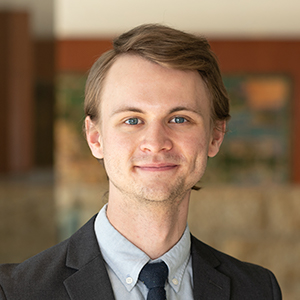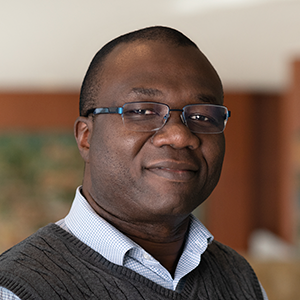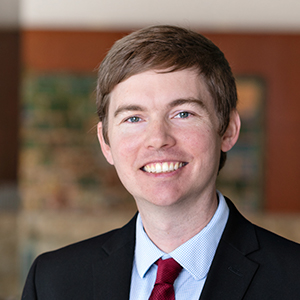One of the most important functions of any labor market is to match workers with the jobs they are best suited for. When this is working well, the economy is more productive and workers themselves attain higher wages and more satisfactory careers. Unfortunately, occupational licensure—while often important for protecting the health and safety of consumers—can hinder the job-worker matching process through unnecessarily burdensome requirements. And some groups of people are not as well-positioned to overcome obstacles to licensure as others. Previous work by the Federal Reserve Bank of Minneapolis shows that workers of color are less likely to be licensed, even after adjusting for gender, age, and educational attainment.
In this article, we focus on lower rates of licensure among foreign-born workers, which constitute an important component of that disparity. When foreign-born workers are unable to fully use their talents in the United States, they can end up in occupations that are a mismatch for their skills. This comes at an economic cost for those workers and the whole economy. Using data from the Bureau of Labor Statistics’ Current Population Survey, we find that foreign-born workers are 7.7 percentage points less likely to be licensed than native-born workers. The largest disparity is between foreign-born workers with the highest educational attainment and their native-born counterparts: 29.1 percent of foreign-born workers with more than a bachelor’s degree are licensed, well short of the 49.5 percent licensure rate of native-born workers with the same education level. We also discuss barriers to licensure with two foreign-trained doctors, for whom the time and cost associated with relicensure directly influenced their employment decisions. We conclude with a brief discussion of promising strategies to lower licensing barriers for foreign-born workers.
Licensure among foreign-born workers varies in certain ways
The data show that lower licensure rates among foreign-born workers meaningfully contribute to lower levels of licensure among workers of color both nationally and among many of the six states of the Ninth Federal Reserve District. This is due to two factors: larger shares of foreign-born workers among workers of color and lower rates of licensure among foreign-born workers. Regarding the first factor, while foreign-born workers in the United States make up just 5.3 percent of White workers, they make up 41.2 percent of all workers of color. The Ninth District follows the same general trend, with the foreign-born share of workers of color ranging from 15.8 percent in Montana to 51.9 percent in Minnesota. As a result, licensure barriers for foreign-born workers have minimal consequences for White workers but substantial implications for the licensure of workers of color.
Regarding the second factor, nationally, foreign-born workers of color are 3.9 percentage points less likely to be licensed than native-born workers. See Figure 1. This is also the case in Michigan, Minnesota, South Dakota, and Wisconsin, where the disparity ranges from 1.8 percentage points in Minnesota to 7.9 percentage points in Wisconsin. In Montana and North Dakota, foreign-born and native-born workers of color have roughly the same likelihood of licensure.
Also, in line with prior research, we find that foreign-born workers are also less likely to be licensed when compared with native-born workers who have the same education level. See Figure 2. At each level of education, disparities increase. Every Ninth District state follows this trend as well.
Lower licensure rates have multiple causes
What underlies these disparities in licensure rates within education groups? It’s helpful to look at the mix of occupations of foreign-born workers, given that licensure is applied at the occupation level. This mix may differ from that of native-born workers for two reasons. The first is the nature of the licensure rules and procedures, which can present disproportionate burdens for foreign-born workers. Those who received their education or training outside of the United States may have difficulty transferring their credentials for licensure purposes. Some licensing boards in effect require that an applicant receive training in the United States. For example, in order to be licensed as a physician, an individual must complete a medical residency, which itself typically requires that the individual have clinical experience in the United States. Clinical experience occurs as part of medical school in the United States but can be difficult to obtain otherwise.
The second reason for differing occupational mix of native- and foreign-born workers is unrelated to licensure. Foreign-born workers may simply have different work preferences, different education, and different employment experiences in their countries of origin that lead them to disproportionately enter certain occupations. Furthermore, the priorities of the U.S. immigration system influence the occupational mix of foreign-born workers. One result is that highly educated foreign-born workers are especially likely to be in computer and mathematical occupations, like computer scientists or programmers, most of which are unlicensed. While they make up 18.2 percent of highly educated workers (those with a bachelor’s degree or more) overall, 34.2 percent of highly educated workers in computer and mathematical occupations are foreign-born.
The experiences of foreign-born workers in health care
From a licensure perspective, a particularly important sector for foreign-born workers is health care, where most occupations are licensed in every state. Because those foreign-born workers who do manage to become licensed often enter health care occupations, we pay special attention to their experiences.
Figure 3 depicts the share of licensed foreign-born workers who fall into large occupation groups. By far, the greatest share of licensed foreign-born workers—about one quarter—are in the Healthcare Practitioners and Technicians occupation group, which includes dentists, respiratory therapists, licensed practical nurses, and many other occupations.
However, barriers to licensure for foreign-born health care workers can be large. To learn more, we spoke with Tamar Frolichstein-Appel, senior employment services advisor and health care community lead at Upwardly Global, an organization that works to “eliminate employment barriers for immigrant and refugee professionals, and advance the inclusion of their skills into the U.S. economy.” Frolichsten-Appel noted that when deciding to pursue licensure, clients must consider the costs in time and money and assess their likelihood of success. For clients who pursue medical licenses in the United States, Upwardly Global provides occupation-specific guides that outline the steps to become licensed, personal coaching on navigating the process, and assistance with completing their applications and preparing for residency interviews. If clients opt not to pursue licensure, the organization helps them pivot into related professional careers such as clinical research.
Upwardly Global client Ihor Hryb, a physician from Ukraine living in Minnesota, spoke to us about the costs involved in his pursuit of licensure in the United States. He spent six to eight hours per day preparing for the exams required to apply for residencies, which required switching to a more flexible job that could accommodate this study schedule. He also completed observational hours with a neurologist at the clinic where he worked. From preparing for and taking the exams to applying for residencies, each step of the process cost thousands of dollars in fees and time. And as Hryb notes, even after completing each step of this process, matching with a residency is far from certain. In 2021, 54.8 percent of non-U.S.-citizen international medical graduates matched with a residency program, compared to 92.8 percent of students graduating from medical programs in the United States.
Another client, surgeon Ilgar Mammadov from Azerbaijan, has grappled with licensure challenges since coming to the United States. Given the substantial amount of time it takes to become relicensed, Mammadov estimates that he’d be nearing retirement age by the time he’d apply for residency. Consequently, he’s considered non-licensed work, particularly medical research, that could leverage his expertise. However, the pay would be substantially lower than if he could continue his work as a surgeon.
Strategies to better integrate foreign-born workers into the licensed workforce
As Hryb and Mammadov’s experiences demonstrate, unnecessarily burdensome licensing processes can prevent foreign-born individuals from fulfilling the promise of their education, training, and skills. To improve the licensure process for foreign-born workers, state regulators can take a number of steps, such as:
- Improving recognition of foreign education and training. Inadequate recognition of any comparable education and training received outside of the United States can be a large hurdle for foreign-born workers pursuing licensure. Mike Zimmer, a senior policy consultant with World Education Services, which provides credential-evaluation services for foreign-born workers in the United States and Canada, notes that some states are now recognizing licensure (for specific occupations) obtained by workers in another country and providing pathways to become licensed in their state. For example, occupational therapists and occupational therapy assistants may be granted licensure in Utah after passing an exam and showing evidence of their previous license. Expanding that approach would greatly facilitate the relicensure of foreign-born workers.
- Promoting and supporting effective navigation programs. Becoming licensed is typically a difficult process, especially in a new country with all of its additional complexities. Given these hurdles, organizations that specifically serve foreign-born workers can play an essential role in helping them understand and navigate the process and ultimately join the licensed workforce.
- Investing in training foreign-born workers. Foreign-born workers often come to the United States with some but not all of the training required to obtain licensure. Minnesota has partly addressed this through its International Medical Graduate program, which includes a residency-preparation program at the University of Minnesota and funding for residencies that are allocated specifically to international medical graduates.
Through strategies like these, states can better recognize the skills that foreign-born workers already possess, enabling these workers to earn a wage commensurate with their skills and experience and provide important services to their communities.
More On
Michou Kokodoko is a project director in the Minneapolis Fed’s Community Development and Engagement department. He leads the Bank’s efforts to promote effective community-bank partnerships by increasing awareness of community development trends and investment opportunities, especially those related to the Community Reinvestment Act.







